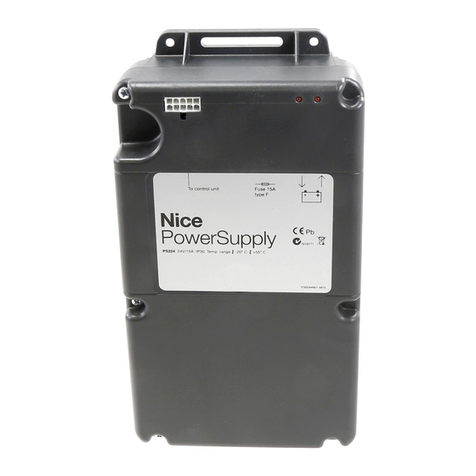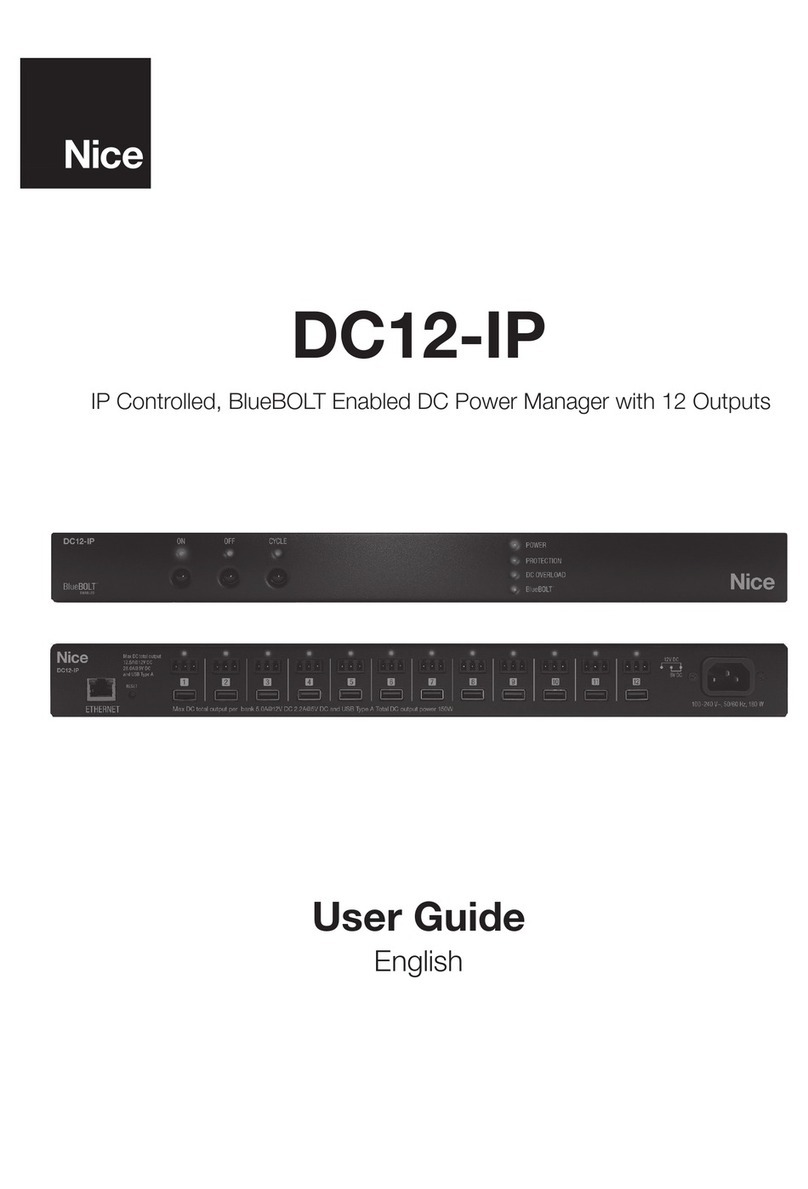4 – Component assembly and connections
STEP 1 – SYP Optimal photovoltaic panel positioning
As a general rule, the panel must be positioned so that it can be constantly
illuminated by sunlight during the day and throughout the year. This means
that its horizontal position and vertical angle must be calculated precisely on
the basis of the location where it is to be installed.
Therefore, after performing the checks specified in chapter 2, and consider-
ing the various options for panel installation as shown in fig. 6, proceed as
follows:
• Ensure the correct position of the panel on the horizontal plane as fol-
lows:
a) In the installation site, determine the cardinal points NORTH and SOUTH,
with the aid of a compass or a geographical map of the location.
b) Then position the panel in the direction NORTH or SOUTH, according to
the following:
– if the installation site is in a country North of the equator (United
States; Europe; Russia; etc.) the panel must be positioned exactly
SOUTH;
– if the installation site is in a country South of the equator (Latin Amer-
ica; Australia; Indonesia, etc.) the panel must be positioned exactly
NORTH.
For further information, refer to fig. 4.
• Ensure the correct position of the panel on the vertical plane as fol-
lows:
Considering the fact that maximum efficiency of the panel is also required in
the winter period, i.e. when the daily hours of sunlight are fewer than in the
Summer, the panel should be positioned at an angle that receives the sun
rays at right angles (frontal) to the sensitive surface.
This angle corresponds to the latitude of the location and can be read on any
commercial geographical map. For example, Madrid has a latitude of 40°;
Venice 45°; or London approx 50° etc. For further information, refer to fig. 5.
STEP 2 – Fixing the SYP photovoltaic panel in the selected site
After establishing the precise position of the panel, fit all components of the
support bracket according to the instructions in fig. 3.
Then fix the panel bracket to the selected surface as shown in fig. 6.
STEP 3 – Fixing the PSY24 battery in the selected site
After performing the checks specified in chapter 2 establishing the precise
position for the battery, fix the latter onto the selected surface as shown in
fig. 13. Note – For fixture, use two screws on the underside, only if the bat-
tery is to be secured in a fixed position and not removable.
STEP 4 – Cable routing
After fixing the panel and battery, route the panel cable through the tube or
protection ducting through to the battery.
With reference to the instruction manual of the automation to be powered,
remove the control unit protection cover. Then pass the end of the power
cable (with wires stripped) through the automation (where the other cables
are routed) and through the dedicated cable clamp. Then route the cable
through the protection ducting (if present) through to the battery.
Caution! – Do not connect the power cable to the control unit; leave access
to the control unit open and leave the cable clamp loose.
STEP 5 – Assembly of “ L” socket on the SYP photovoltaic
panel cable
If the cable is too long, it can be shortened, taking care to strip the wires so
that their length is equal to the values specified in the fig. A (caution! – differ-
ent lengths may impair subsequent assembly of the socket).
Then proceed with assembly of the GREY “L” type socket on the end of the
panel cable, as follows:
01. Insert the various elements of the socket on the cable, taking care to
observe the sequence as shown in fig. 7;
IMPORTANT! – If the power cable in the pack is used out-
doors, it must be entirely protected with special ducting suit-
able for the protection of electric cables.
CAUTION! – Do not modify the electric jumper on the connector (fig. 8).
02. Using a slotted screwdriver, attach the blue wire to terminal n° 1 on
the connector and brown wire to the earthing terminal (4) (fig. 9):
Note – The reference numbers and symbols are printed on the con-
nector below the terminals and on the opposite side.
03. After fixing the two wires, insert the connector in its casing (fig. 10).
Important – The correct position of the connector is that with the
earthing symbol in the lower position (see fig. 10);
04. Then pull the cable outwards from the socket and insert the seal and
washer (fig. 11-a-b). Lastly, tighten the cable clamp (fig. 11-c) using a
wrench, to guarantee completely sealed closure.
05. After assembling the socket, position the seal supplied on the connec-
tion side (fig. 12).
STEP 6 – Assembly of “ L” socket on the power cable
If the cable is too long, it can be shortened, taking care to strip the wires so
that their length is equal to the values specified in the fig. A (Caution! – dif-
ferent lengths may impair subsequent assembly of the socket).
Then proceed with assembly of the BLACK “L” type socket on the end of
the power cable, as follows:
01. Insert the various elements of the socket on the cable, taking care to
observe the sequence as shown in fig. 7;
CAUTION! – Do not modify the electric jumper on the connector (fig. 8).
02. Using a slotted screwdriver, attach the blue wire to terminal n° 1 on
the connector and the brown wire to the earthing terminal (4) (fig. 9):
Note – The reference numbers and symbols are printed on the con-
nector below the terminals and on the opposite side.
03. After fixing the two wires, insert the connector in its casing (fig. 10).
Important – The correct position of the connector is that with the
earthing symbol in the lower position (see fig. 10);
04. Then pull the cable outwards from the socket and insert the seal and
washer (fig. 11-a-b). Lastly, tighten the cable clamp (fig. 11-c) using a
wrench, to guarantee a completely sealed closure.
05. After assembling the socket, position the seal supplied on the connec-
tion side (fig. 12).
STEP 7 –Connecting the SYP photovoltaic panel to the
PSY24 battery
To connect the panel to the battery, proceed as follows:
01. Connect the GREY “L” type socket to the “IN” connector on the bat-
tery (fig.14);
02. To select the most suitable connection configuration for the connection
of all system devices, refer to the example shown in fig. 15. Note – If
frequent disconnection of the battery plug is envisaged, use the screw
in fig. 16-a. Otherwise use the screw in fig. 16-b.
STEP 8 – Connecting the PSY24 battery to the automation
CAUTION! – For safety reasons, the operations described in Step
8 must be performed exclusively by a skilled and qualified tech-
nician.
To connect the battery to the automation, proceed as follows:
01. Access the control unit of the automation and insert the power cable
connector in the buffer battery socket on the control unit. To locate this
socket, refer to the instruction manual of the automation to be pow-
ered.
02. Connect the BLACK “L” type socket to the OUT connector on the bat-
tery (fig. 17);
03. Fix the socket by means of the safety screws supplied, with reference
to fig. 18. Note – If frequent disconnection of the connector from the
battery is envisaged, use the screw in fig. 16-a. Otherwise use the
screw in fig. 16-b.
SYSTEM INSTALLATION
English – 3
EN






























